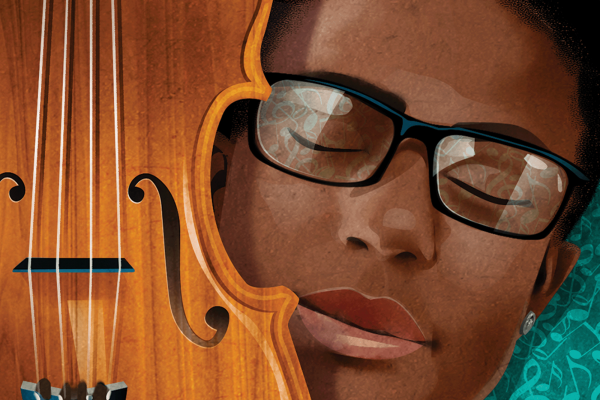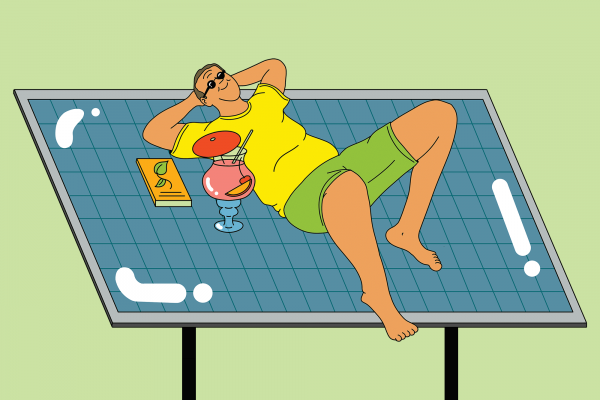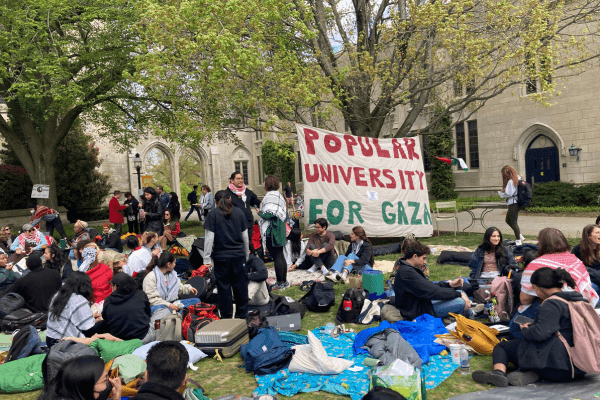On the surface, there’s no particular reason we should know much about Oregon City, a relatively small community on the outskirts of Portland, Ore. For some, its historic significance as the last stop on the Oregon Trail in the 1850s evokes nostalgia about an era of pioneering Americans who headed west to tame the wild lands of the Pacific Northwest and expand the borders of opportunity. Yet within that problematic narrative that tends to downplay (or ignore) the enormous cost of land theft and violence committed against countless Indigenous peoples is another injustice: the racial exclusion of Black people that found an enduring home in both the “founders” of Oregon and their many descendants.
While James Baldwin would likely disagree that Vanderpool was the “only person in the history of the United States” to be convicted for the “crime of being Black,” what Sanderson means here is that the state of Oregon’s legalized racism against Black people is legendary, and Vanderpool was tried and convicted of being mulatto — a crime that would result in the closure of his business and his expulsion from the state.
Why revisit the scene of the crime over 170 years later, long after this incident was buried in the dusty archives of library basements?
As a good student of history, Sanderson knows all too well the writer William Faulkner’s adage that “The past is never dead. It’s not even past.” Substantive engagement with these histories often feels elusive. But Sanderson presses into the remarkable details of Vanderpool’s life (as well as his accusers and their enablers) to reflect on her own complicity in white supremacy. As someone presently living in and making sense of Oregon City today, she seeks the possibility of repairing the harms — however slowly — in our current moment. Along the way, I appreciated Sanderson’s candor and vulnerability; her own journey of self-awareness and growth is not spared from awkward conversations, shameful recognitions, or frustrating entanglements with whiteness.
Ambitious in scope, The Place We Make is part cultural and geographic history, part spiritual memoir, with thoroughly researched original source documents and contemporary voices. The structure of the book alternates between historical profiles from Vanderpool’s context and Sanderson’s personal moves from the places of ignorance, silence, and exclusion toward empathy, self-disclosure, and community. It is no small task to write as a confessional Christian while clearly identifying the numerous ways Christianity has served to create and perpetuate white supremacy. Sanderson tackles this challenge with humility, often citing theologians and Christians of color who have been wrestling with this paradox from the beginning of colonial modernity.
For example, she engages with the work of theologians Willie James Jennings, Chanequa Walker-Barnes, and Mark Charles as they examine the formation of whiteness and its destructive impact on the places and communities that inform our identities. Sanderson urges the church to take responsibility for its history by beginning the work of repair — locally, politically, and relationally.
Sanderson makes clear the many connections between Oregon City’s past and present, drawing a straight line from Jacob Vanderpool’s tragic exclusion to the reality of places like it across the U.S. landscape. “From its inception,” writes Sanderson, “this town was not just meant to be quintessentially Christian and American. It was also designed, legislated, and enforced to be a White utopia.” While Oregon was unique insofar as it was the only state to be admitted to the Union with racially exclusionary laws on the books, its long legacy of racism toward Black and Indigenous people is hardly uncommon in the formation of these united states.
Sanderson is right to connect the dots between Vanderpool, Portland’s ongoing description as the “whitest city in America,” Oregon being home to the largest Ku Klux Klan chapter west of the Mississippi, and Portland’s 2020 FBI ranking as having the third-highest number of hate crimes per capita in the country. Though much of the Pacific Northwest — including Portland and my own hometown of Seattle — tends to see itself as englightened and “progressive” in its imbrace of racial diversity, we don't often like to talk about these important realitites.
Yet when the Pacific Northwest holds up the mirror of history, it shows that our region has many of the same blind spots as the rest of the country: dehumanizing treatment of Indigenous peoples, destruction of the natural environment in the name of industrial growth, redlining and restrictive housing covenants, and ongoing gaps of racial equity in education, health care, and policing. The Pacific Northwest may not have built slave plantations or legislated Jim Crow segregation, but we sure patterned our cities in the shape of American racialization.
Sanderson confesses that “to spend decades living in a society that has been obviously shaped along racialized lines and never to allow the injustices around me to nudge me toward curiosity ... was a sin, not of commission but of omission.” She welcomes the reader to the repentance act of greater curiosity.
What more could we learn about ourselves and our neighborhoods if only we looked a little closer and more honestly at our past? The reason to do this is not to drudge up painful histories to mete out arbitrary punishments; Sanderson uses the honesty of the biblical text as a guide for demythologizing our forebearers, pointing to the examples of patriarchs like David, Paul, and Jacob. By naming their moral flaws and mistakes as essential to the narrative, Sanderson comes to the realization that “Honoring those who came before me had to begin with being honest about them.” Baldwin’s essential reminder feels resonant here: “Not everything that is faced can be changed. But nothing can be changed until it is faced.” Let us not turn away from our shared history, especially the painful parts.
There are a few places I would have liked to see a clearer 20th-century bridge between Oregon of the 1850s and present-day Portland (for example, the exclusionary housing policies implemented after WWII), but Sanderson’s overall case remains strong, and the book concludes with hopeful and practical steps that don’t sugarcoat the work involved in making real change, both in ourselves and our communities.
Ultimately, I came away from The Place We Make encouraged by Sanderson’s journey and her invitation to consider how connected we truly are — to the past, to our neighbors, and the common lands and built environments we now inhabit. Her heartfelt plea to the church to face its complicity in the legacy of American racism and recover a vocation of healing is a call I hope many will hear as they read this timely and thoughtful book.
Got something to say about what you're reading? We value your feedback!








